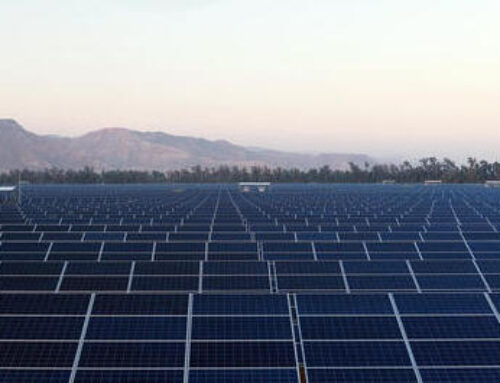Today, five are under construction. A sixth, South Fork Wind off the eastern tip of Long Island, is completed and began operating about a year ago. The remaining five have been stopped either at early stages or through efforts by the Trump administration to review or outright rescind already-issued federal permits. The administration ended all new lease-area designations and permits.
Of the two under construction that faced stop-work orders, one is Revolution Wind, a joint Connecticut and Rhode Island project that is already 80% complete. While it and the other project — New York’s Empire Wind — have restarted, it’s unclear what might happen to the other three. In the case of Revolution, a legal dispute is still underway .
“I think there’s no question that East Coast states, particularly from the mid-Atlantic up, have to continue to fight for offshore wind,” said Elizabeth Klein, who served as the final Biden administration director of the Bureau of Ocean Energy Management, BOEM, the entity within the Interior Department responsible for offshore wind.
“There’s no question that what the current administration is doing is damaging to the industry and causing a great deal of harm,” she said. “The looming question is whether or not these companies who are involved will be able to essentially wait it out and invest their time and resources in parts of developing offshore wind that aren’t directly about getting permits and approvals to move forward with new projects.”
Ørsted, the company developing Revolution Wind and other projects, declined to comment on the situation. Avangrid, the company developing Vineyard Wind 1, the only other New England project under construction, did not respond to inquiries.
Klein said the Trump administration claim that it was concerned about national security issues with Revolution Wind is “specious.” She said national security is reviewed in conjunction with several departments throughout every stage of the offshore wind process, beginning with the basic identification of offshore areas that might be suitable for leasing.
“All of those things are considered throughout the process, starting with where these sales first take place,” she said. “This is arbitrary and capricious decision-making. There’s no evidence that there’s something new or unusual or that had not been considered.”
Trump himself has circulated a host of falsehoods about offshore wind — that it causes cancer and kills an outsized number of birds and whales, and that it only runs some of the time. Offshore wind is a technology that is a quarter-of-a-century old, during which time it has operated successfully in Europe. Onshore wind is far older.
A one-year assessment of South Fork Wind by its developer, Ørsted, showed the turbines operated every month of the year. The data, which came from U.S. government’s Energy Information Administration, EIA, showed some of South Fork’s highest outputs were during the winter, when the power is needed most, due to natural gas being used for heating as well electricity. The wind power can prevent electricity price spikes.
The company also found the turbine foundations were already operating as artificial reefs that supported marine life.
The waters off the northeast U.S. are considered among the country’s best for offshore wind, given the area’s wind speeds and other factors. And since the region doesn’t have any fossil fuel resources, even with steep up-front costs, offshore wind is likely to quickly become cost effective, given the fuel is free.
A recent analysis by Politico of EIA data showed that adding wind and solar to the electricity mix tended to lower the cost of electricity, not increase it, as the Trump administration claims. The Politico analysis said: “Among the 22 states that drew higher-than-average shares of their power from wind and solar, 17 had below-average electricity prices in June, according to EIA data.”
“Undermining viable sources of energy is inconsistent with the objective of addressing an energy ‘emergency’ and will instead exacerbate energy supply challenges in the Northeast,” said Peter Shattuck, a director at Power Advisory LLC., a joint Canada/U.S.-based energy consultant. Shattuck also is an energy and grid expert with long experience in New England.
He said that, in something of a tarnished silver lining, the Trump blockage will give long-term projects such as transmission extra time to plan. But trying to strategize through all the Trump executive orders, other policy changes and legal battles is bound to make projects more expensive.
“It will likely raise the risk profile and risk premiums that are included in projects,” he said.
“The actions from the federal administration against offshore winds have been targeted and very calculated. In our view, it’s holding back a huge source of power that is so desperately needed,” said Stephanie Francoeur, senior vice president of communications and external affairs for the educational nonprofit Oceantic, which supports marine renewable energy world-wide including offshore wind.
“The administration talks about an all-of-the-above energy strategy and unleashing American energy dominance. We advocate that offshore wind is a critical component to that strategy.” She said energy needs to be depoliticized so the market, not the government, can pick the winners and losers.
“They’re looking to take apart an entire industry that could support energy demand in the U.S., address national security issues actually, because there is nothing better from a national security perspective on energy supply than generating it yourself at home, here in the U.S.,” Klein said.
Those concerns are not lost on the region’s grid operator, ISO-New England, which released an uncharacteristically blunt warning a couple of days after work stopped on Revolution Wind.
“The ISO is expecting this project to come online and it is included in our analyses of near-term and future grid reliability. Delaying the project will increase risks to reliability,” the statement read. “Unpredictable risks and threats to resources —regardless of technology — that have made significant capital investments, secured necessary permits, and are close to completion will stifle future investments, increase costs to consumers, and undermine the power grid’s reliability and the region’s economy now and in the future,” it continued.
Turbine installation for Revolution Wind, Connecticut’s only offshore wind project. The Trump administration had ordered construction stopped. A court ordered work resumed while the full case plays out in court. Credit: File photo courtesy of Ørsted
The Revolution shutdown, along with the tax credit eliminations, unpredictability of Trump energy policies and mandates come just as the ISO was beginning its next 10-year energy forecast. The ISO has already said it expects demand to begin to increase after years of flat or even declining energy needs.
“I think in the short term we still expect to be OK, but it’s kind of in that longer-term and the uncertainty that’s brought into this that’s challenging from a grid planning standpoint,” said ISO spokesman Matt Kakley.
The ISO’s most recent estimates are that region’s annual electricity consumption will increase by about 11% over the next decade . On one hand, the removal of tax credits for electric vehicles and heat pumps could shrink that demand. On the other, their removal for solar systems and energy efficiency could increase it.
In addition to the offshore wind and the NECEC transmission line, the ISO is also expecting the six New England states to move ahead with their first joint development of transmission that, after more than a decade of delay, would finally get onshore wind from northern Maine onto the southern part of the New England grid.
Kakley said six proposals from four different developers were submitted by the Sept. 30 deadline.
Now there is the concern that the need for any federal signoffs could mean further delay, or worse.
Kakley said the ISO always deals with uncertainty when predicting power needs in the face of the complexities of long-term power and transmission projects. “This is a different sort of uncertainty than what we’ve seen,” he said. “We’re really looking at what we can do to enhance our ability to forecast and synthesize all the different factors that are coming in – adding resources, taking resources out, and seeing what that does to the region’s risk profile.”
What about solar?
Solar’s outlook is a little squishier than offshore wind’s. Yes, the coveted 30% tax credits are slated to disappear — for purchased residential systems at the end of this year and in another year for leased and commercial ones.
But costs for solar have come down dramatically over time, making it one of the cheapest forms of power to purchase. It’s also the fastest to install. So it’s possible residential consumers and commercial investors will still consider it a cost effective option.
Another unknown factor is the effect of tariffs and other restrictions on imported components on that low price and availability, as well as to storage systems that can be paired with it.
Solar is not only an industry here in the state, it is part of the solution for us.
Rep. Jonathan Steinberg, D-Westport
New England has never been a hotbed for huge commercial installations the way the desert southwest and other parts of the country, with large sunny expanses, can be. But rooftop solar for homeowners and on municipal and commercial buildings still has huge potential in the region and can be extremely useful to grid reliability.
It is already more useful than the ISO ever imagined it would be. The ISO says it has prevented brownouts and worse on hot summer days with air conditioning cranked up around the region. It has sent spot market prices into negative territory, especially on sunny days when neither heat nor air conditioning is needed.
“I think there’s capital out there that’s willing to invest,” said DEEP Commissioner Dykes. “I think the question is, what’s the price of solar without federal support, and with tariffs, all these other things coming into play? How does that affect the cost benefit for investment, and how much can we bring those costs down?”
Dykes has a few ideas. One is to look into swapping out solar panels in older systems for new, more efficient panels as a means to increase power output. Another is to use — in her words — already disturbed sites, such as the site of a retired oil-fired generator, for grid-scale storage for excess solar power. Using a preexisting power site would mean there’s already connections to the distribution system.
DEEP Commissioner Katie Dykes. Credit: Shahrzad Rasekh / CT Mirror
The biggest open question for Connecticut is what might change in state policy to help make up for the lost tax credit. The Public Utilities Regulatory Authority will be weighing that as part of its reconsideration of the rules for the solar program it established. That reconsideration was already planned and underway, with recommendations due in March.
Another policy aspect involves what the state might do legislatively. Unlike most of its neighbors, Connecticut has kept caps on the amount of solar allowed, only loosening some of them in the last few years.
It’s also an open question whether state money would be authorized to make up some of the tax credit shortfall, or whether the state might do as Canada already does and establish an infrastructure bank to leverage private and public money into the financing pipeline, or create a Transmission Infrastructure Accelerator like California recently enacted to access low-cost public financing for such projects as a way to save money overall. The northeast-based advocacy group Acadia Center is helping the six New England states explore financing models.
“My only priority for next session is to set the stage for some extension or enhancement of our solar incentives,” said energy co-chair Steinberg. “This is very important to me as the godfather of solar, as Katie Dykes once called me, and that will be very hard.
“Everybody says it’s over; federal government has killed solar, game over, there’s nothing Connecticut can do. I cannot accept that,” he said. “Solar is not only an industry here in the state, it is part of the solution for us. To abandon it and not offer any incentives, or to backtrack to the point where the incentives don’t stimulate actual implementation — shame on us.”
Solar systems like this one on a condo project in Mystic will lose a federal tax credit that made them less expensive. The heat pumps also on the roof will lose their tax credit as well. Both actions were part of the tax and spending bill signed into law by President Trump on July 4. Credit: Earthlight Technologies
But there are other ways to indirectly reduce costs for solar; specifically by streamling permitting, the regulatory process and siting – soft costs, as they are sometimes called.
Massachusetts is already doing that.
“We’re going to have to throw everything we can at permitting, streamlining and reducing soft costs in order to support the affordability of more solar investment for grid-scale projects,” Dykes said.
Kat Burnham, senior principal at the consulting and policy group Advanced Energy United and the state lead for all three southern New England states, said Connecticut and other states need to step up and put some financial skin as well as policy in the game. She pointed to financial tools like the Green Bank.
“I think what’s important is to make sure that we’re looking at a range of different options and trying to find the right one that fits the particular need or situation,” she said. “What are the tools in our kit, and how do we use those so that we minimize our risk?”
She said there’s a cost to building things. And she said there’s “a cost to inaction … We can’t just sit on our hands and hope for the best.”
DEEP is also in the final throes of accepting bids for innovative energy efficiency and energy upgrade proposals designed to help lower energy bills.
In Massachusetts, for instance, all three major utilities — one of which is Eversource — have agreed to discount electric rates in the winter for people who use heat pumps . While they run on electricity, aside from being efficient, they free up other fuels like natural gas to run power plants. In Connecticut, DEEP is continuing with its focus of lowering the upfront installation costs for heat pumps.
Solutions
Barbara Kates-Garnick, a former Massachusetts energy official, now a professor of practice at Tufts University’s Fletcher School, said the path forward she sees is bringing together utilities, regulators, policy makers, other stakeholders and system participants to explore some of the out-of-the-box solutions.
“The answers aren’t clear, but I think we have to look at how we regulate, what we regulate, and come to some conversations with the utilities so that we come to a bigger grand bargain,” she said.
She noted, however, the Biden idea of promoting clean energy by providing incentives, funding and jobs — especially in red states — “when push comes to shove, it didn’t work.”
Dykes is not ruling out increasing fossil fuel-run power as part of Connecticut’s solution to the Trump anti-renewables effort.
“It’s a possibility,” she said, noting that Lamont has talked about the need to be open to natural gas as part of a solution.
If the offshore wind and other projects do not come online, she said, “that will certainly put us into a very challenging place in terms of having an adequate reserve margin and ability to maintain reliability even under some normal weather conditions.
“In light of that, we have to consider what are the alternatives that make the most sense to ensure we can continue to have an affordable, reliable grid in the early 2030s, and natural gas is part of that. Retaining those oil units — is that a solution that we’ll have to rely on?” Dykes said.
Dolan of the Power Generators Association, while also advocating continued use of the region’s gas and oil fleet, doesn’t have specific facilities he’d like to see targeted for reinvestment.
“I think there needs to be a refocus around the meat and potatoes about what is operating today and making sure it continues to operate tomorrow. Now the replacement energy supplies are not coming or not coming anytime soon, and for these power plants to be able to continue operating and operating at higher capacity, reinvestment is going to be necessary,” Dolan said, taking a thinly-veiled swipe at Connecticut, Massachusetts and Rhode Island, which all plan to have net-zero grids in the next 20 to 25 years.
For offshore wind proponents, it’s a rebuilding and refocusing period for the industry, said Oceantic’s Francoeur, who added that more than 100 turbine foundations and towers had been installed in the active offshore wind projects since construction season opened in May.
“The industry is going to weather this administration. Who knows what the next will bring,” she said. “But I think it won’t be the orderly advancement that it once could have been.”
Former BOEM Director Klein said she thinks it’s important for states to keep supporting the offshore wind projects that are underway.
“It’ll demonstrate to the project developers that there are important entities in the U.S. that are still supportive and want to find a path forward,” she said. “Folks aren’t building this for kicks, because it’s fun. This is about actual energy supply needs … and actually communities, when presented with alternatives, are likely to see that offshore wind is the best of the bunch.”
In the meantime, some of the wind focus may shift to Canada, where the provinces of Nova Scotia and Newfoundland and Labrador are exploring the development of huge amounts of offshore and onshore wind. Whether New England will be able to access some of that is years and likely many diplomatic twists away.
The Trump administration’s pivot away from wind and solar in particular and back toward fossil fuels is already taking the U.S. globally out of step. Recent data from the European clean energy think tank, data and policy tracker Ember showed that worldwide, in the first six months of 2025, renewables overtook coal power for the first time. And it showed that the growth in solar and wind power outpaced the growth of demand in the same time period. But while fossil fuel generation and its emissions dropped in China and India, the world’s most populated countries, fossil fuel generation and emissions increased in the U.S. Clean generation growth did not keep pace with demand growth in the U.S.
Credit: Ember
“For a bunch of largely economic reasons, we do still think that solar and wind are going to out-compete fossil fuels,” said Kate Sinding Daly, senior vice president for law and policy at the New England-based Conservation Law Foundation, though she admitted the Trump actions are slowing down their adoption.
But she wondered whether the industry would be able to pivot enough in the face of multiple challenges to keep investors confident enough to continue.
“That, I guess, is the big question mark,” she said.
Dykes sees the same challenge.
“Investors need to know that after a multiyear permitting process, when you have a project that’s 80% constructed, that you can bring it online, sell your power and get your money back,” she said. “And if we can’t guarantee that in the Northeast or in the U.S. anymore, I think that affects the investment climate for all types of resources at a time when we can least afford to increase investor perception of risk.”
The energy committee’s Steinberg added a warning. “That’s an excuse to be paralyzed. That’s an excuse to basically throw up our hands and say, ‘we just have to wait out the feds,’” he said. “That’s going to mean that the ramping up stage is going to be even more complicated on the other side, assuming there is another side.”





